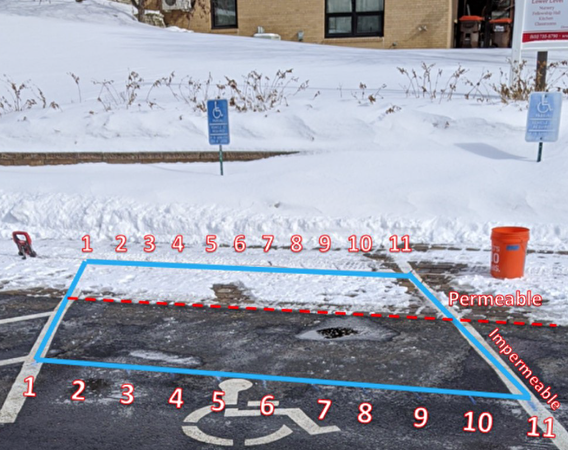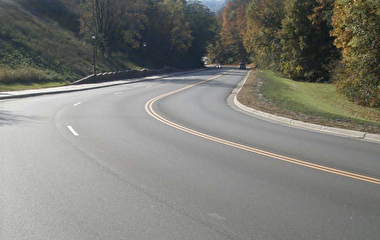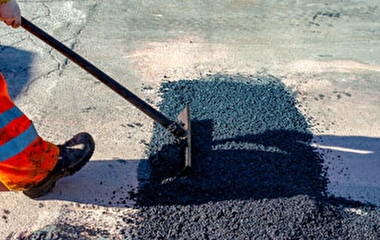
pavements.
Sometimes tradeoffs are a necessity. Researchers from the St. Anthony Falls Laboratory (SAFL) set out to determine whether permeable pavement could be used to reduce the quantity of salt applied to roads while also keeping them safe in the winter. However, the study revealed pros and cons of permeable pavement, and pavement professionals considering its use will need to weigh their priorities.
The driving motivation behind the study was chloride—a worrisome contaminant in Minnesota’s streams, lakes, and groundwater that is commonly washed off in road salt.
“There are over 50 lakes and streams impaired for chloride in the Twin Cities metropolitan area,” says John Gulliver, professor in the Department of Civil, Environmental, and Geo- Engineering and principal investigator for the project, “which means that fish and other aquatic biota will not hatch and grow as well as they should, and in some cases cannot live.”
Icy winter roads, however, are still a concern. A literature review of prior research on permeable pavement—which features porous voids in the pavement and in the underlying crushed rock base—suggests that the material could potentially solve both the safety and environmental issues of icy roads.
To determine if this is in fact true, the SAFL researchers conducted friction surveys at various locations around Minnesota to compare the overall performance of unsalted permeable pavement to that of more traditional, salted impermeable pavement. Photographs and temperature readings were collected at each site, but the overall most reliable method for gauging conditions was surface friction measurements.
In the Twin Cities metro area, friction measurements were taken at 22 survey sites, and the comparison between permeable and impermeable pavement showed mixed results:
- Snow and ice tend to last longer on permeable pavement. The air voids in and below the pavement act as insulation, and the heat from the soil profile cannot reach the surface and melt snow and ice as rapidly.
- Melted water, however, will not refreeze on the surface of permeable pavement because the water will infiltrate into the rock base below the permeable pavement, where the temperature is warmer. This also occurs in temperatures substantially below freezing.
- Impermeable pavement, therefore, is more likely to have more pooled water on its surface than permeable pavement, which can refreeze into slick, dangerous ice patches.
One additional factor, the researchers found, is that the impermeable pavement being surveyed had the benefit of being salted, but the permeable pavement did not. Considering that it was not salted, the experimental permeable pavement actually performed well, they say.
“When you’re getting to the transitional time between winter and spring, when snow and ice melt during the day and refreeze on the surface at night, meltwater will instead drain through a permeable pavement,” says Richard McCoy, public works director for the City of Robbinsdale.
In the end, pavement engineers considering the use of permeable pavement would have to weigh their priorities. On a freeway, for instance, where high travel speeds make deicing critical and the pavement sees heavy wear and tear, the current designs for permeable pavement would likely not be an ideal choice. In a parking lot or a side road with low-speed, low-frequency travel, however, the environmental benefits of unsalted permeable pavement might outweigh the risk of ice, Gulliver says.
The investigators have conducted presentations and workshops in Minnesota and other parts of the Midwest to spread awareness of their research.
Writer: Sophie Koch


